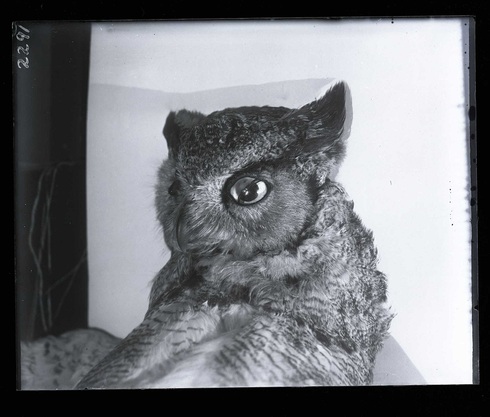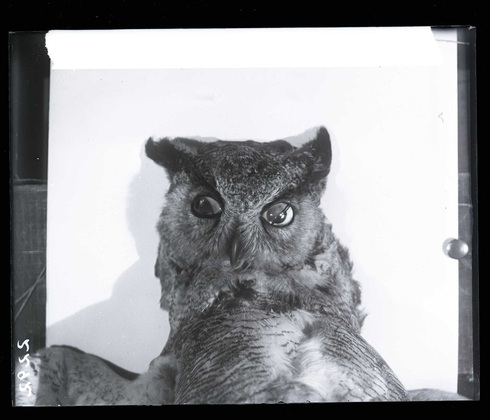I wonder if it is harder to win a staring contest if you have more than two eyelids that you have to keep from blinking?
Though humans don’t have that trouble, reptiles, birds, fish, and some mammals (ex: camels, polar bears, aardvarks) do. These animals have a nictitating membrane – a transparent third eyelid that moves horizontally across the eyeball (as opposed to vertically like the upper and lower lids). The membrane functions as a layer of protection from water and other elements.
Thomas Sadler Roberts prepared a study of the membrane on a “fresh dead specimen” of the Great Horned Owl in April of 1918. In these images you can see the owl’s nictitating membrane in various stages of progression across the eye.

– Nictitating membrane, third eyelid, Great Horned Owl, fresh dead specimen, April 25, 1918

– Nictitating membrane, third eyelid, Great Horned Owl, fresh dead specimen, April 25, 1918